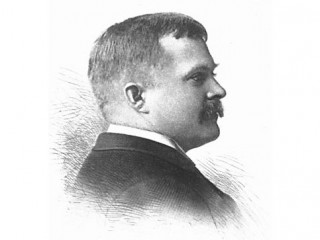
John Wellborn Root biography
Date of birth : 1850-01-10
Date of death : 1891-01-15
Birthplace : Lumpkin, Georgia,U.S.
Nationality : American
Category : Arhitecture and Engineering
Last modified : 2012-01-20
Credited as : architect, founder of the Chicago School style, formed the Western Association of Architects
0 votes so far
John Wellborn Root was born in 1850 in Lumpkin, Georgia, the son of Sidney Root and his wife, Mary H. Clark. He was named after a maternal uncle, Marshall Johnson Wellborn. Root was raised in Atlanta, where he was homeschooled. When Atlanta fell to the Union during the American Civil War, Root's father managed to send young Root and two other boys on a steamer to England, while his mother and sister went to Cuthburt, Georgia. John's father, Sidney, had a shipping business in Liverpool, England.
While in Liverpool, Root studied at Clare Mount School. His later design work was said to have been influenced by the pioneering work of Liverpool architect Peter Ellis, who designed and built the world's first two metal-framed, glass curtain-walled buildings, Oriel Chambers, 1864, and 16 Cook Street, 1866.
After Root returned to the U.S., he earned an undergraduate degree from New York University in 1869. After graduation, he took a job with the architect James Renwick, Jr. of Renwick and Sands of New York as an unpaid apprentice. Later he took a position with John Butler Snook in New York. While working for Snook, Root was a construction supervisor on Warren and Wetmore's Grand Central Terminal. It is also said that Root was greatly influenced by the architecture of Henry Hobson Richardson.
In 1871 Root moved to Chicago, where he was employed as a draftsman in an architectural firm. There he met Daniel Burnham. Two years later in 1873, they formed the firm of Burnham and Root; they worked together for 18 years. During the economic downturn in 1873, Root earned extra income on jobs with other firms and as the organist at the First Presbyterian Church.
Root developed the floating raft system of interlaced steel beams, to create a foundation for tall buildings that would not sink in Chicago's marshy soil. Root's first use of this revolutionary system was for the Montauk Building in 1882. He later transferred use of the steel frame to the vertical load-bearing walls in the Phenix Building of 1887, in imitation of William LeBaron Jenney's Home Insurance Building of 1885.
Root, Burnham, Dankmar Adler, and Louis Sullivan formed the Western Association of Architects because they felt slighted by East Coast architects. Root served as president in 1886. In 1887, he was elected a director of the national American Institute of Architects. His work from his prime years has been recognized for significance by being designated as National Historic Landmark, National Register of Historic Places, and Chicago landmarks.
He worked on the plan for the World's Columbian Exposition in Chicago. Before it was constructed, Root died of pneumonia in 1891 at the age of 41. He was buried in Uptown's Graceland Cemetery.
Root married Mary Louise Walker in 1879, but she died of tuberculosis six weeks later. In 1882, he married for a second time, to Dora Louise Monroe. Their son John Wellborn Root, Jr. also practiced in Chicago as an architect.
















